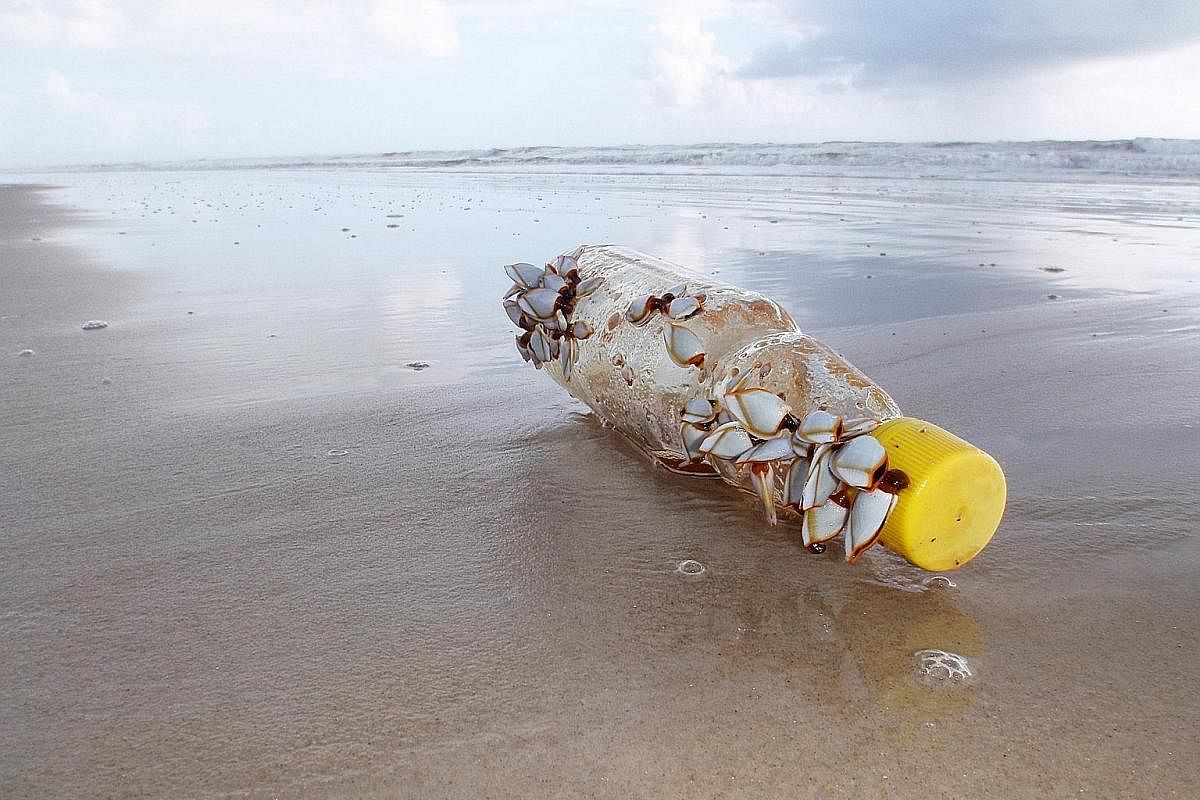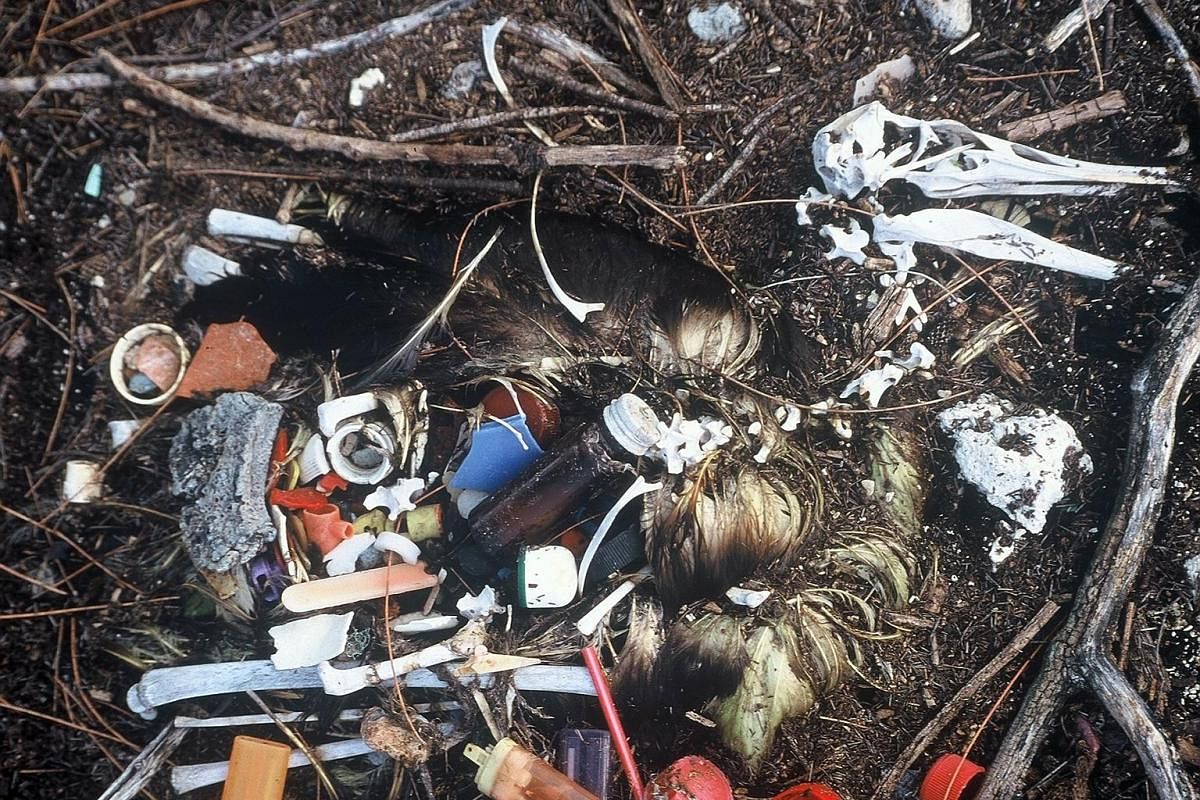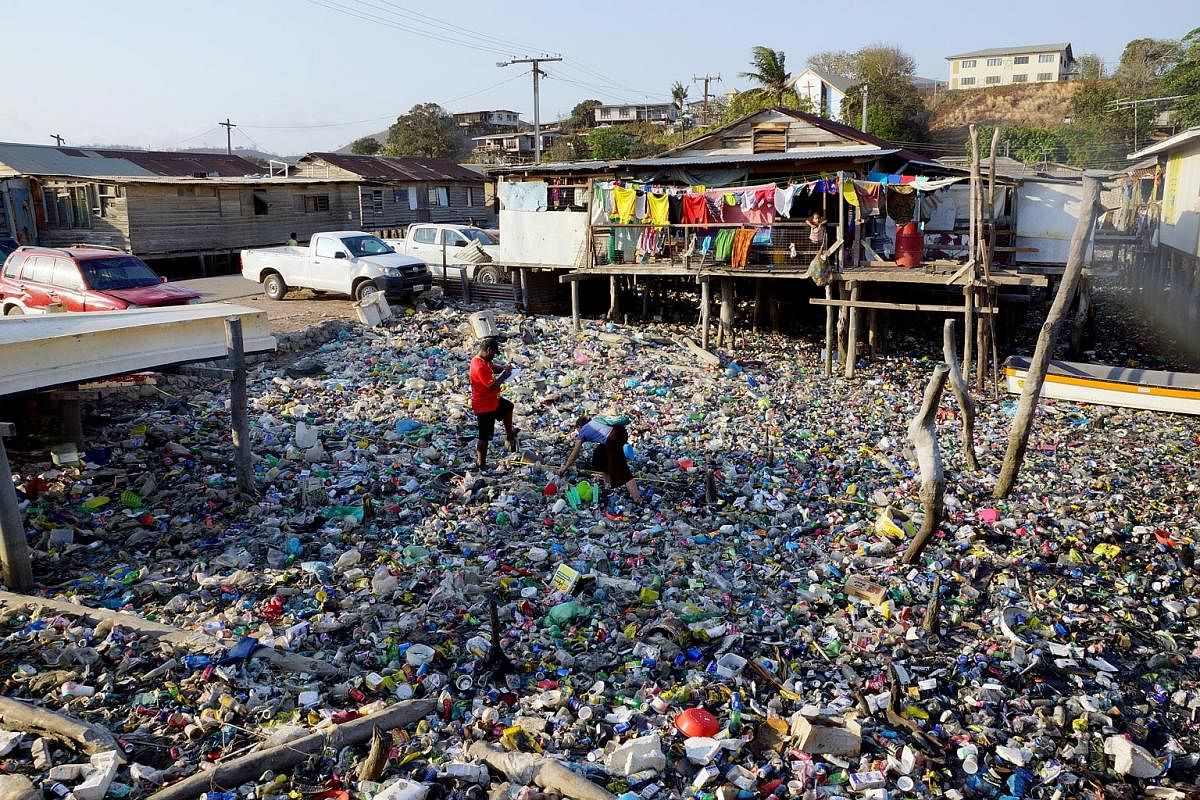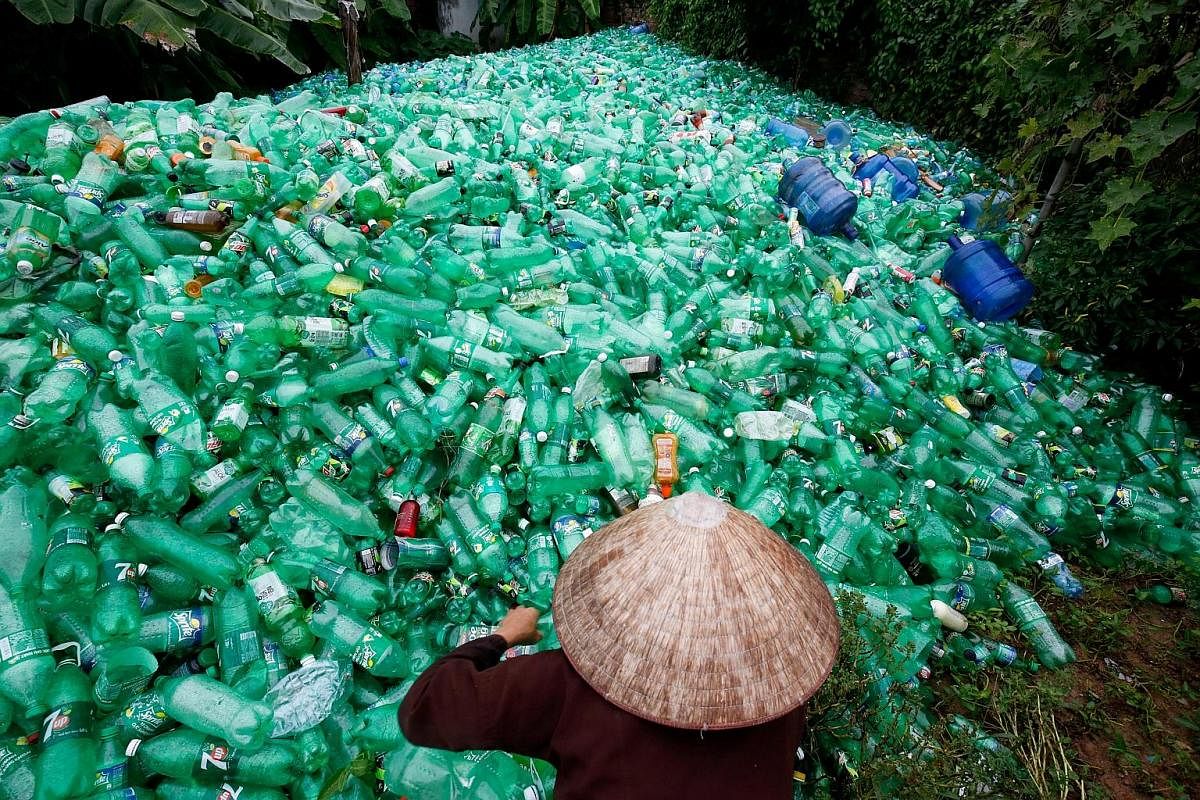Plastic bottles are the height of convenience. We rely on them for clean water or our favourite soft drinks - they perfectly fit our rushed grab-and-go lifestyles which revolve around disposable goods.
Problem is, the world is drowning in plastic waste and bottles are partly to blame.
Last year, nearly 483 billion plastic PET (polyethylene terephthalate) bottles were made, according to market research by Euromonitor International - that's about 66 per person on the planet. By 2021, Euromonitor estimates annual production of PET bottles will hit 583 billion, driven by booming demand for clean drinking water in Asia.
But the price for this convenience is a growing mountain, or tide, of plastic waste and rising oil consumption - annual plastic production represents about 6 per cent of oil consumption.
The good news is that PET plastic bottles can be recycled, turned back into new bottles or into fibres used in carpets or fleecy clothing. Yet globally just over half are recycled, with the remainder incinerated, dumped in landfills or in rivers and oceans. The bottles and caps take many years to break down.
Billions of bottles and bottle caps clog beaches and reefs, joining an estimated eight million tonnes of plastic waste dumped in the world's oceans each year, harming marine life and threatening human health.
"The environmental threat from plastic - not just bottles, but more widely - is enormous. It's one of the biggest we're facing," Mr Erik Solheim, executive director of the United Nations Environment Programme (UNEP), told The Straits Times in Singapore last month.
According to UNEP, between 60 per cent and 70 per cent of marine plastic waste comes from five countries in Asia - China, Vietnam, the Philippines, Indonesia and Sri Lanka. Poor waste management, poor regulations and lack of education are partly to blame.
Every year, green group Ocean Conservancy runs a global coastal cleanup involving thousands of volunteers. Last year, the top three items collected were cigarette butts, plastic bottles and bottle caps.
As awareness of the waste crisis grows, so too does the pressure to change consumer habits and to involve plastic producers, retailers and regulators to cut down on waste and promote recycling.
Taxes on plastic bags in Australia, Britain and Ireland and outright bans in Kenya and Rwanda have slashed disposable bag use. Container-deposit schemes in Australia, the US and elsewhere have sharply increased glass and plastic bottle recycling rates as consumers have a financial incentive to return bottles.
"It's not about being anti-plastic. It's about being anti-plastic waste," said Mr Sam Barratt, chief of public advocacy for UNEP.
"What we need to see is a shift in how we view plastic as a highly valuable and practical product and one that has a significant ecological footprint," he told The Straits Times.
Ideally, the world will shift to a closed-loop economy in which plastic goods are produced, used, recycled and turned into plastic goods again in an endless cycle with no plastic escaping into the environment. In theory, this is possible for PET bottles, and in Europe about 80 per cent of bottles are recycled.
Manufacturers play a key part.
Mr Barratt said one option is for manufacturers to commit to not only use 100-per-cent-recycled PET but also to take full responsibility for the materials to support a return system. At present, only about 7 per cent of recycled PET bottles globally are turned back into bottles.
Both Mr Barratt and Mr Solheim pointed to ongoing discussions on a partnership between Coca-Cola and UNEP on cutting plastic waste.
Coca-Cola is the world's largest beverage company. Last year, single-use plastic bottles made up 59 per cent of its global packaging.
"In Asean and around the world, Coca-Cola is working to close the loop by designing more resource-efficient packaging, supporting community recycling systems and boosting use of renewable materials through innovation. Trash ending up in our oceans and waterways is devastating, and we want to be part of the solution," the company told The Straits Times in an e-mail.
Singapore, too, is looking at ways to greatly limit plastic waste and dramatically boost recycling rates. Only 7 per cent of Singapore's plastic waste was recycled last year.
"We have a vision towards a zero-waste nation," said Dr Amy Khor, Senior Minister of State for the Environment and Water Resources, and Health. The aim is to cut plastic waste and reduce the amount of waste that goes into incineration plants, she told The Straits Times on the sidelines of a marine plastic waste conference in Singapore last month.
"Currently, what we have is a Singapore Packaging Agreement, which is voluntary and that is working with the manufacturers to reduce their packaging waste and that includes bottles. We're going to make this mandatory by 2021 and that is from the producer or the manufacturers' side," she said.
Earlier this year at a UN oceans summit, delegates from a number of Asian nations, including China and Indonesia, pledged to step up efforts to stem the flow of plastic waste into rivers and seas.
But Asian governments face an uphill battle. Surging demand for bottled water in the region means more plastic waste.
And the crisis is not just about bottles, said Dr Britta Denise Hardesty, a marine debris specialist at Australia's Commonwealth Scientific and Industrial Research Organisation (CSIRO).
Plastic bottle caps represent a serious threat to some marine life, said Dr Hardesty, from CSIRO's Oceans and Atmosphere Flagship in Hobart. She has extensively studied the impact of plastic waste on marine life, including seabirds.
While most bottles aren't eaten by marine animals, the caps are, Dr Hardesty told The Straits Times. She has removed plastic bottle caps and other plastic items from the stomachs of seabirds.
"The other thing that's a real problem with plastic bottles - because they have a large surface area - is if they float, they are a really good vector for transport of invasive species from place to place," she added.
For Dr Hardesty, bottles are emblematic of the world's love affair with single-use plastics. And until tougher policies and a switch in consumer behaviour kick in, the plastic waste crisis will only get worse.







